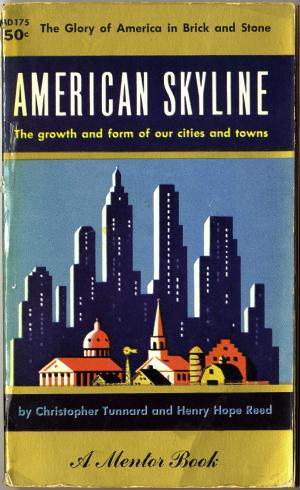In 2001 the University of Texas acquired the private library of architectural educator and historian Colin Rowe, who revolutionized the teaching of architecture in the United States by introducing an appreciation of American heritage, the dynamic quality of early American settlements, and the American revitalization of the classical style. The New York Times described Rowe as one of the two most influential (architectural) historians of the twentieth century.
Colin Rowe studied at Liverpool School of Architecture, at the Warburg Institute, and at Yale. His 1947 essay “The Mathematics of the Ideal Villa” comparing Palladio’s Villa Malcontenta to Le Corbusier’s Villa Stein and situating modern architecture inside historical influence radically altered architectural critique. He taught in Liverpool and Yale before joining the faculty at the School of Architecture at the University of Texas in 1953. While at UT Rowe and a group of other young faculty members became known as the “Texas Rangers” for their attempts to change the traditional curriculum. Rowe taught at Cooper Union, Cornell University, and Cambridge. In 1962 he returned to Cornell as Professor of Architecture in the Graduate School of Architecture and Urban Design where he remained until retiring in 1990.
Rowe’s early teachings on formalism at Cornell were a major influence on the "Whites," a group of American architects including Richard Meier, Peter Eisenman, Charles Gwathmey, and John Hejduk, whose work was notable for formal purity and absence of color. Rowe’s Graduate Urban Design Studio at Cornell introduced “contextualism,” a theory of urbanism focusing on the interface between city form, architecture, and social intercourse and his book Collage City, published in 1978 with Fred Koetter, introduced the concept of “bricolage” (Claude Levi-Strauss’s concept of adopting a methodology to fit a topic) to urban theory. These efforts to integrate traditional urban centers with the sprawling suburban landscapes of the United States were integral to the compact mixed-use development of New Urbanism.
The Colin Rowe Collection containing over 2,500 architectural monographs, exhibition catalogs, and theoretical texts on architecture, urban design, fine art, history, interior design, critical theory and philosophy reveals the wide range of Rowe’s scholarship and teaching. The collection is especially rich in the subjects of the Italian Renaissance, Palladio, Le Corbusier, urbanism, critical theory, furnishings and interior decoration. The Colin Rowe Collection is housed off-site at the Moore Foundation in Austin, Texas, where visitors may experience the collection in its own space shelved according to Rowe’s preferences. Upon request, books from the collection can be transferred to campus for study in the Reserve Department at the Architecture & Planning Library.


